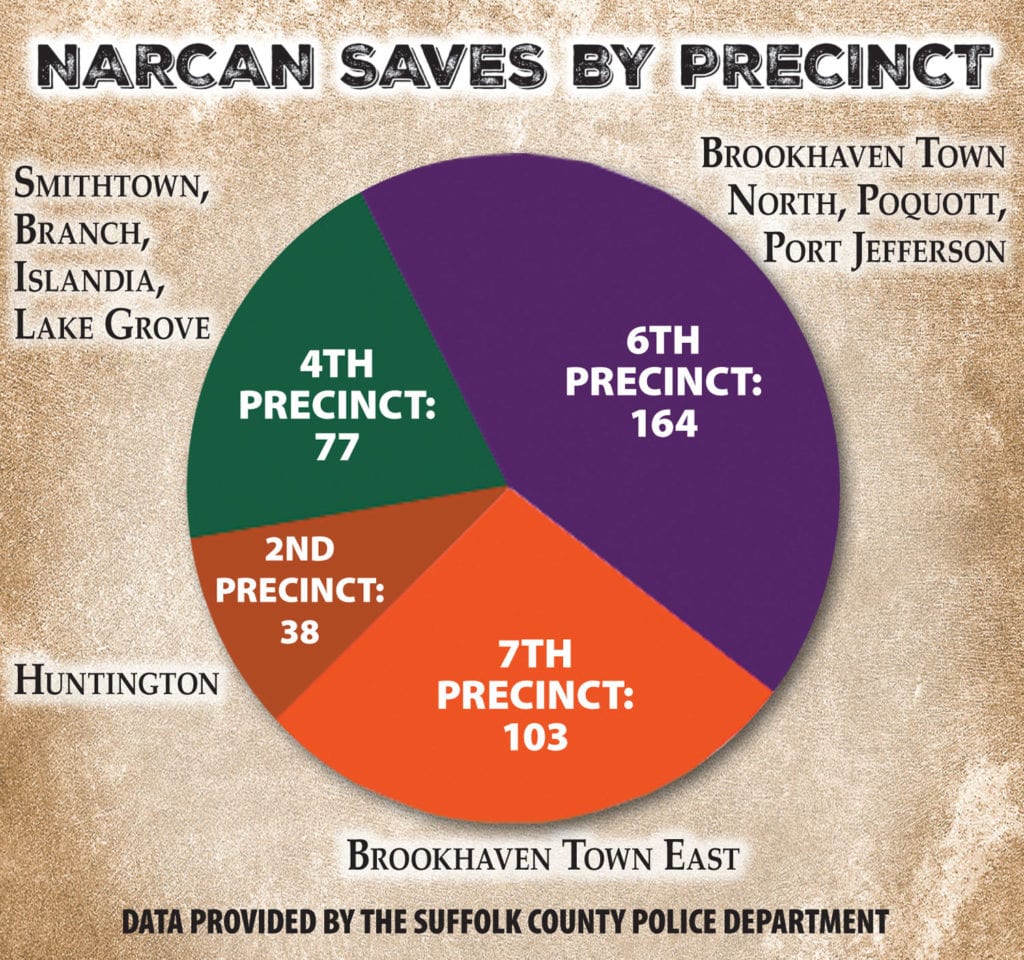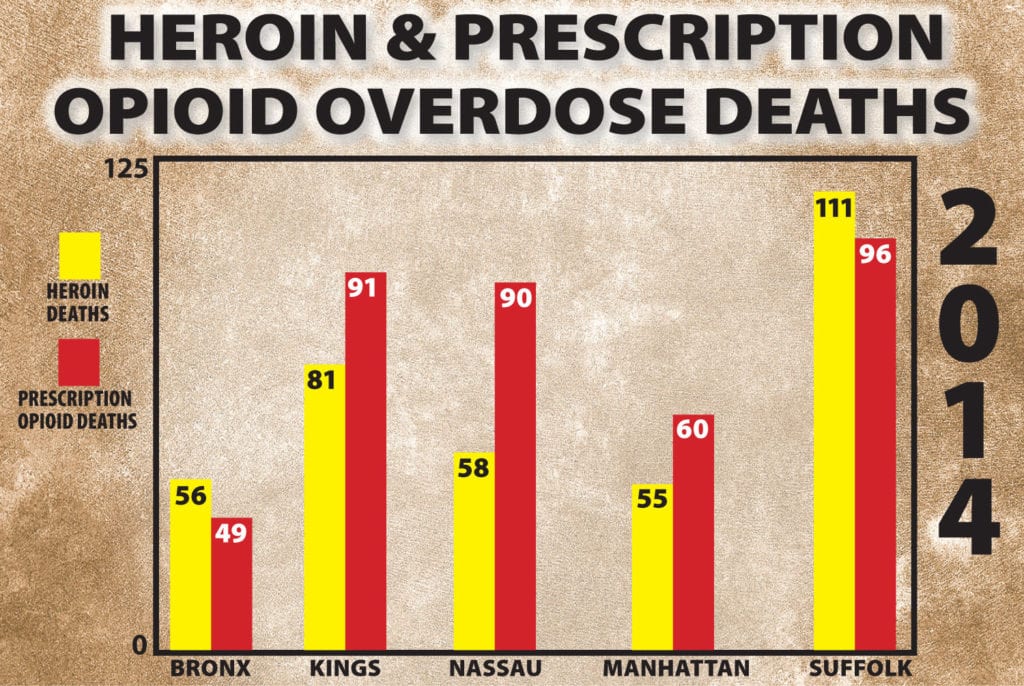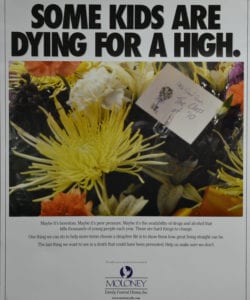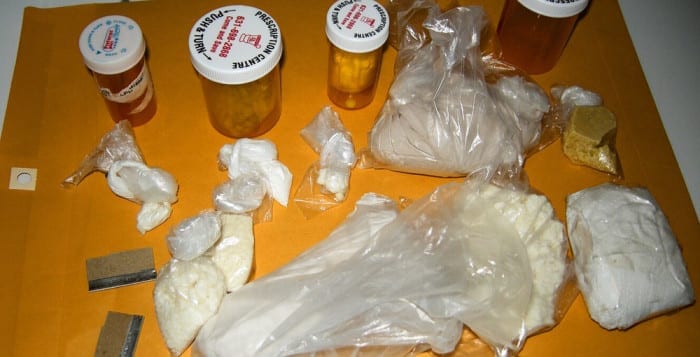By Tracey Farrell
In 2002, my 16-year-old son Kevin had surgery on his shoulder for a football injury. He was prescribed 60 Vicodin pills with no other instructions but to take one or two of them every four to six hours for pain.
I didn’t know they weren’t like antibiotics, and you weren’t supposed to take all 60. He was still in pain, so they gave him 60 more. Well, guess who is now addicted to them? He was buying them during lunch.
This is the high school quarterback. His girlfriend is the cheerleading captain. He is beautiful, loving, fun and funny. His friends love him. His teachers and coaches love him. He has not an enemy in the world. He graduates. He works. He is a great kid.
Kevin chose to smoke pot instead of taking the pills soon after high school, but at some point he went back to the pills — especially since I was on him all of the time to stop smoking. He had multiple concussions over his high school football career. After his last one, I saw a change in his personality. He was easily angered, depressed, anxious — all things he was not before.
I didn’t know at the time that marijuana and opioids help make all of those symptoms so much better. The drugs make them disappear. I didn’t know that the only enemy he did have was the one within himself.

When Kevin went back to the pills, he began snorting them this time. A lot of them. Once I saw a powder residue on his glass desk and, only knowing what I saw on TV, I put it on my tongue to see if it would numb it.
Nope, not cocaine.
I knew deep down something was going on. He didn’t shower as often or take care of his teeth. Changes in his habits were starting to happen.
These Oxycodone pills are expensive, and make you painfully sick when you don’t have them. An addict becomes so desperate that they will beg, borrow and steal to get them — literally. Eventually when you have exhausted stealing your family’s available cash, you steal their jewelry, sports memorabilia and anything else of value you can sneak out of the house. You write bad checks from your mom’s bank account. Eventually you realize there’s an alternative available and you turn to heroin. It’s cheap, and readily available. You just have to put money in your mailbox and drugs appear moments later.
That point happened some time in 2011. I assume he started snorting it before he shot it.
Nine years in and I am still clueless, uneducated, unaware to so much of it. Kevin never, ever looked high in front of me. I was missing spoons, which are used to melt the heroin down to a soluble form, but I still thought maybe they were thrown out by mistake? Yes, he had been to rehab, but I didn’t know that it didn’t fix you. I didn’t know that me giving him no option but to enter rehab wouldn’t work. I didn’t know that he had to want to be in recovery.
I learned how to be manipulated. I enabled everything. I believed every lie he told me and would hand over money in fear he would be killed for the money he owed.
Eventually, he must leave the house. Kevin would live in his car, on which I was now making the payments and insuring. It’s winter and I cannot fathom the thought of him in a car at Christmas, so I get him an apartment. I sent his stepfather over many times to see if he was alive when I couldn’t get in touch with him. I even called 911 on him when I thought he was suicidal, which resulted in a short hospital hold. I started to understand that he does not want this for himself, but doesn’t know how to stop. He fears withdrawal, and I hear his pain and cries when he begs me for money because he is so sick. He is eventually hospitalized for a blood infection. I realize I can no longer keep him in that apartment.
I clean the place out.
He didn’t need much food. The only thing in the fridge was water. I find all the things he has used as a tourniquet. There is an amazing amount of plastic garbage bag drawstrings removed from bags, Q-tips everywhere with the cotton taken off which are used as filters. So many water bottle caps. So many syringes.
“There were times I threw money into his car so angrily when he asked me. I struggled between loving him and hating him.”
I didn’t want my son to die, but I’m realizing I’m making it more comfortable for him.
Through most of his addiction he was highly functioning, always holding down a job. This was no longer the case.
He gets out of the hospital and is back to his car. I’m giving him $20 a day. He gets food stamps and Medicaid from the Department of Social Services. I find he sells what’s on his food stamp card. I pump gas in his car, but I do not hand over more cash. There were times I threw money in his car so angrily at him when he asked.
I struggled between loving him and hating him.
He began living in a hotel with his dealer and got arrested for possession of a syringe. He’s assigned a public defender, but of course Mom pays the fees and it’s knocked down.
But a few days prior, he made the choice on his own — which is key — to seek help.
He made the calls on his own, instead of me doing all of the legwork, to enter South Oaks Hospital in Amityville. His third try at rehab. But now, he wants it.
I went to a family meeting about 10 days in.
There he is. My son, my real son. Thank you, thank you and thank you.
He was enrolled in a 28-day program. He went to Mainstream House in Riverhead, a sober house. We do family things together again. We shop, we go to lunch, dinner. He wanted to be around us again. I haven’t had this in years. We laugh, we cry.
He got kicked out of sober living for having Ambien, a prescription drug, because he had a hard time sleeping. I let him back home. Kevin has a new job, a new girlfriend. He seems happy.
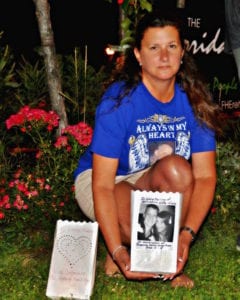
I didn’t go to the classes I should have. I didn’t learn that someone new to recovery does not want their past thrown at them. One day at a time is their mantra. Yesterday is the past. He’s going to his meetings on a regular basis, but now that he is working, that starts to not be as often. Anything that goes missing I automatically accuse him. He wants a new phone because his is old and cracked. I bought him a new one and he “lost” it. I still tell him that if he didn’t sell it he would have it. He tells me he is working an honest program and that he has told me everything — including that he did not sell the phone. I apologize and tell him I am proud of him.
Kevin is working for a company which does party rentals.
One Sunday, in September 2012, he came home looking tired. He was thrilled that they gave him a $100 tip. They even gave him the leftover cake, which we of course ate together. We spoke of the cotton candy on his sneakers, because he worked the cotton candy machine. He thought it was fun.
The next day, his sister found him dead in bed. It was an accidental overdose.
They say money is a trigger.
I will never know what led him back. I know now I didn’t cause it. I couldn’t control it and I couldn’t cure it. I prepared myself that this day could come, but I thought he was in the clear. Our very last conversation was about cotton candy, one of the things I craved most when I was pregnant with him.
I still have the cotton-candy-covered shoe laces. I miss him every day. I still struggle with not doing the things I now know I should have done, and I try to teach people every day to not make the same mistakes I did. Learn from me please. Let me tell you anything and everything that may help you or your loved one. It helps me to help you.
I just went to a celebration meeting of one of his best friends celebrating one year of sobriety on Sunday, and he said, “I think he may have died so I can live.”
Tracey Farrell, formerly Tracey Budd, is a Rocky Point resident who, since her son’s passing, educates others on drug abuse and assists in finding help for those who are struggling, or know someone who is struggling, with addiction. She is the founder of North Shore Drug Awareness Advocates and also a 2015 TBR Person of the Year.

